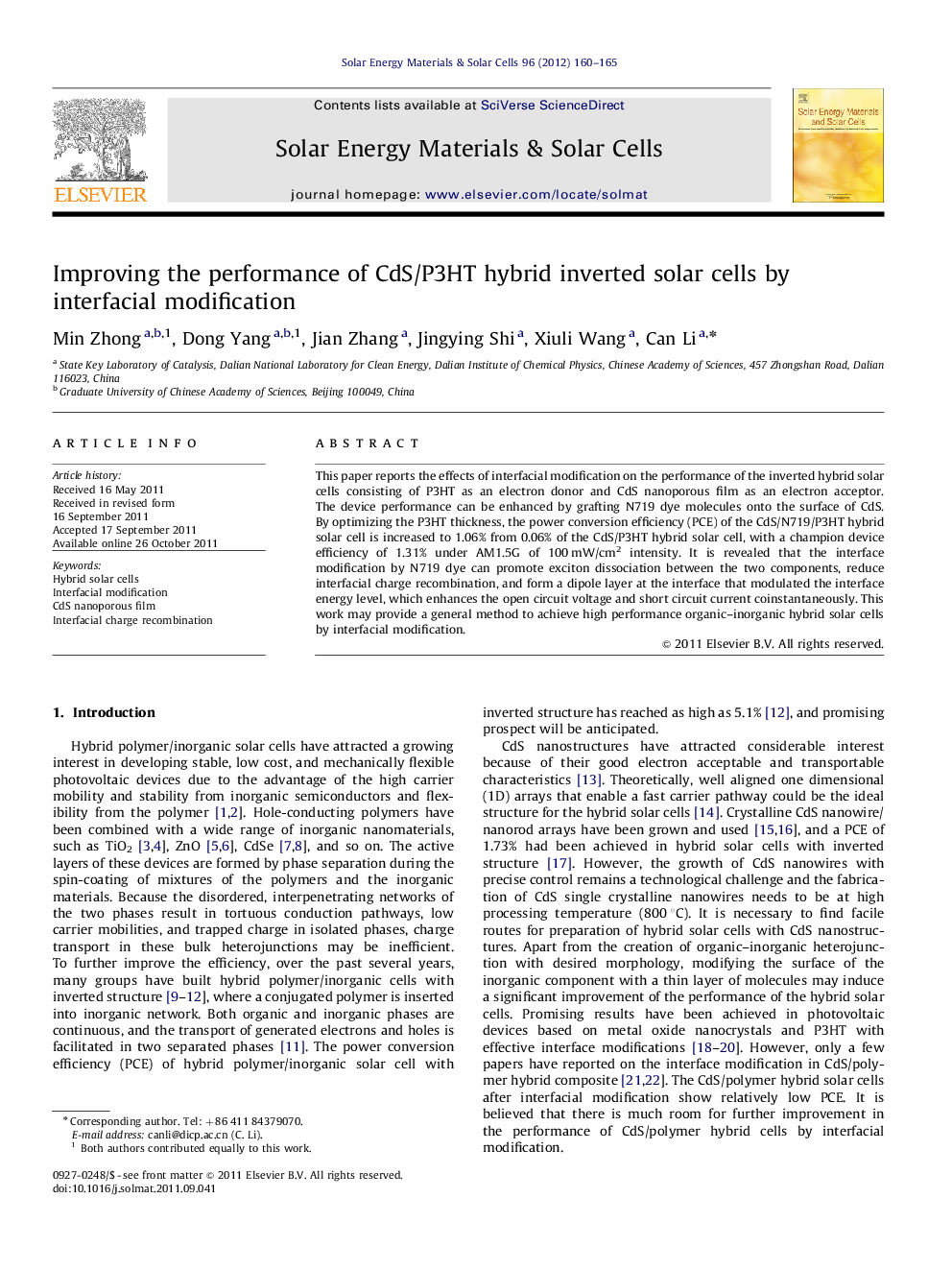| Article ID | Journal | Published Year | Pages | File Type |
|---|---|---|---|---|
| 79481 | Solar Energy Materials and Solar Cells | 2012 | 6 Pages |
This paper reports the effects of interfacial modification on the performance of the inverted hybrid solar cells consisting of P3HT as an electron donor and CdS nanoporous film as an electron acceptor. The device performance can be enhanced by grafting N719 dye molecules onto the surface of CdS. By optimizing the P3HT thickness, the power conversion efficiency (PCE) of the CdS/N719/P3HT hybrid solar cell is increased to 1.06% from 0.06% of the CdS/P3HT hybrid solar cell, with a champion device efficiency of 1.31% under AM1.5G of 100 mW/cm2 intensity. It is revealed that the interface modification by N719 dye can promote exciton dissociation between the two components, reduce interfacial charge recombination, and form a dipole layer at the interface that modulated the interface energy level, which enhances the open circuit voltage and short circuit current coinstantaneously. This work may provide a general method to achieve high performance organic–inorganic hybrid solar cells by interfacial modification.
► Hybrid solar cells based on CdS nanoporous film and P3HT. ► N719 dye enhances the performance of hybrid solar cells significantly. ► N719 dye serves multiple functions.
